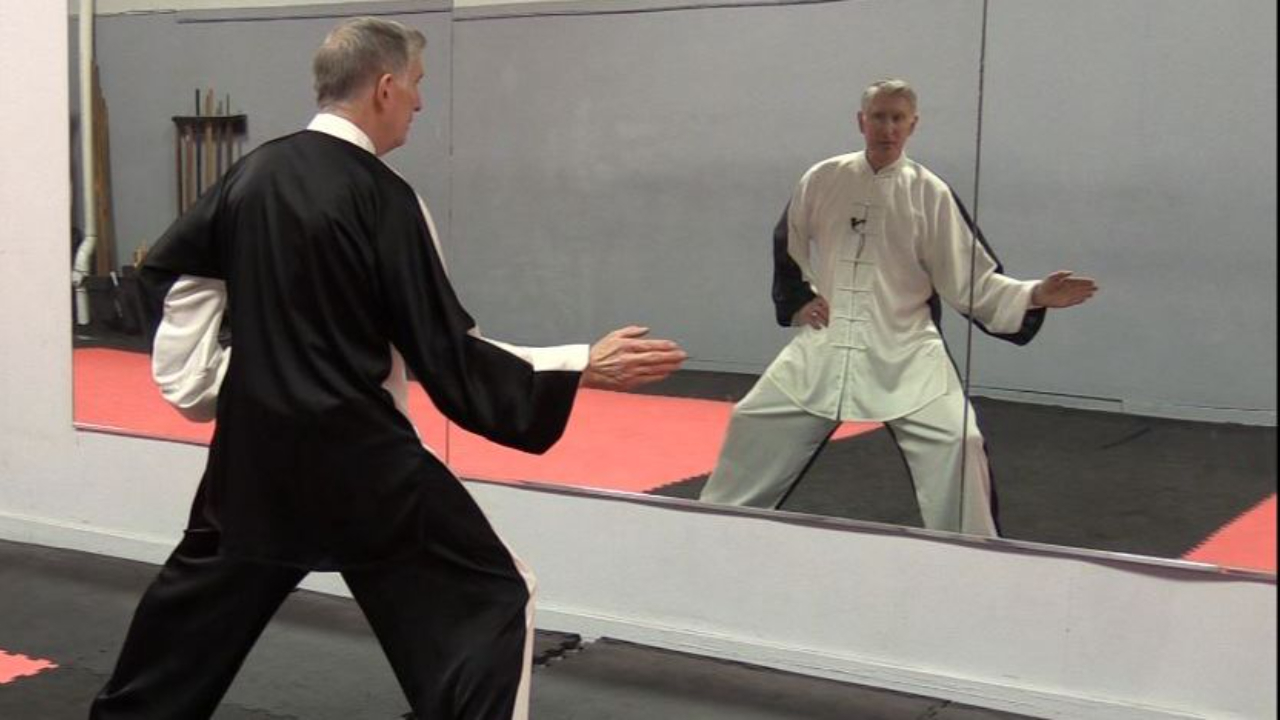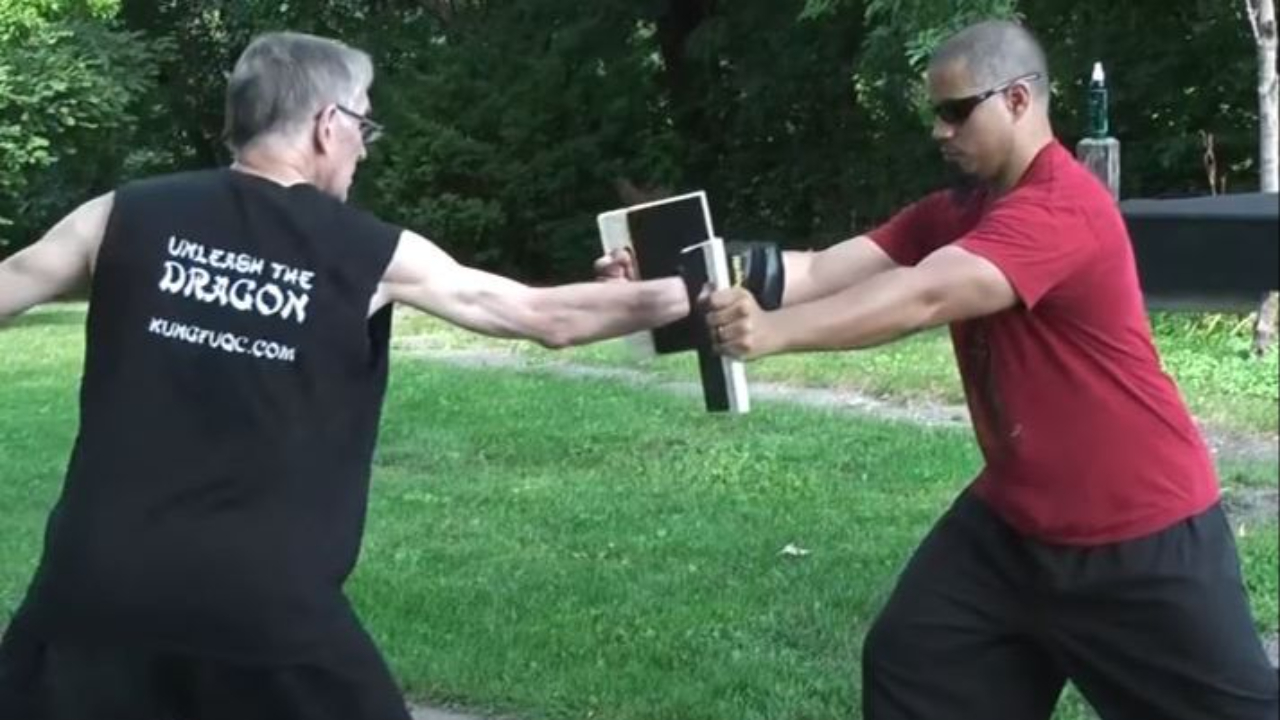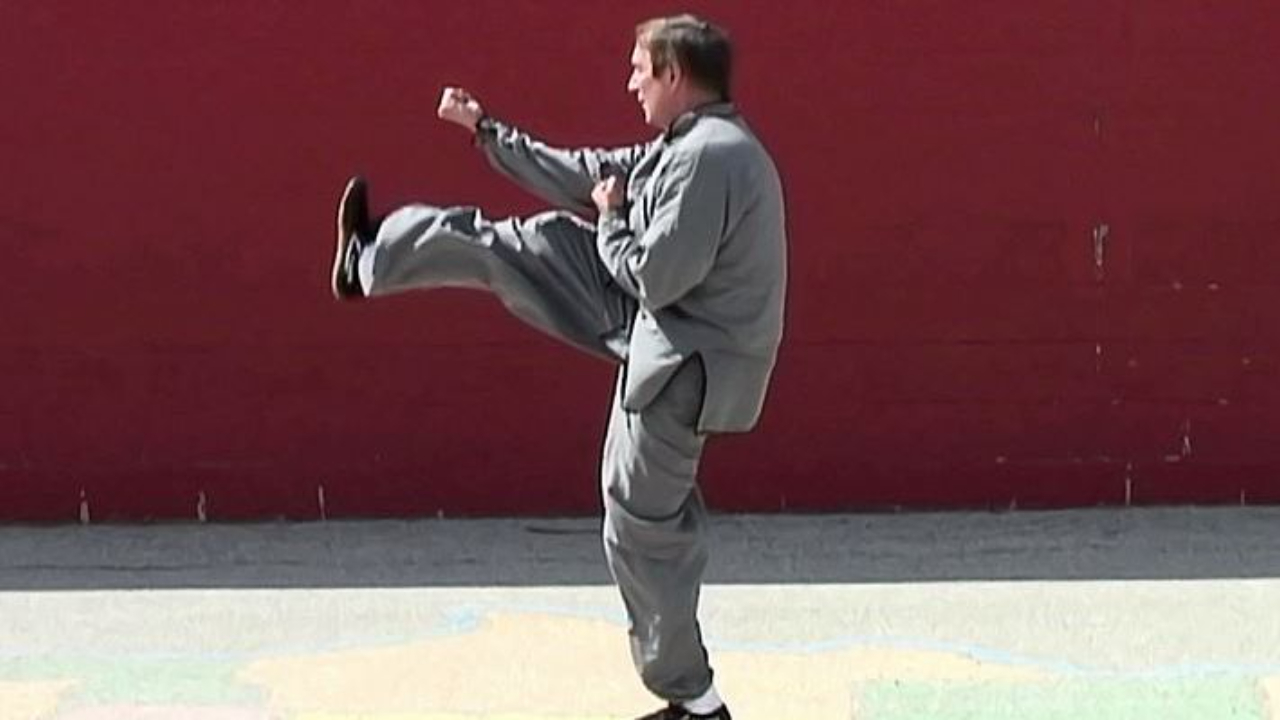A Beginner's Lesson in Tai Chi Silk-Reeling - Video

If you have a half-hour to invest, try to work through this video -- it's a live class I did last weekend on Zoom teaching the first of Chen Taiji's Silk-Reeling exercises -- "Single-Hand Reeling."
This is helpful to all internal martial artists, but particularly if you practice Taijiquan and Baguazhang.
I have to say that most of the videos I've seen on silk-reeling don't teach it at all. But that should be no surprise. The first teacher who taught me silk-reeling had no clue what silk-reeling is, so I was sent down a blind alley thinking that to achieve silk-reeling, we "imagine" our Qi spiraling through our body. It's part of "Qi cultivation," he said.
Nope.
Silk-Reeling "energy" -- the Chinese term is chan ssu jin -- is a physical skill requiring a spiraling through the body in a connected way.
Some say the spiraling movements add power to your Taiji. I believe the most practical purpose of silk-reeling is the neutralizing and redirecting of your opponent's force. You know the...
After 49 Years of Martial Arts Why Am I Practicing So Much?

A little over a week ago, I marked the 49th anniversary of my first martial arts class. You might know the story by now -- 1973, a garage that had been turned into a dojo in the rear part of a strip mall in Lexington, Kentucky -- a room full of young people inspired by Bruce Lee -- in fact, there were so many new students in the intro class, the garage door was opened and the class spilled out into the shopping center's parking lot.
The following week, a large chunk of people didn't return. The week after that, we all fit inside the dojo with the door closed. Every month that passed, the class got smaller but still had nearly 20 students.
I practiced an hour a day, punching and kicking up and down the 7th floor hallway in Commonwealth Hall at Eastern Kentucky University. I was determined to become good.
Now, after 49 years, I find that I am still just as determined to improve my skills as I was in 1973.
Shouldn't I feel like a "master" by now? Instead, I feel more like a beginner....
How to Embarrass a Teacher When You Violate Martial Etiquette

I have found that manners in martial arts can be a bit tricky. And depending on who you study with, you need to think from a different cultural perspective.
In a recent podcast interview, Chen Taiji instructor Nabil Ranne of Germany explained how he violated martial arts etiquette during an early conversation he had with his teacher, Chen Yu.
He asked Chen Yu how many times each day should he practice the form that some of us call Laojia Yilu but is also known as "Old Frame First Form," or "First Road."
Chen Yu replied, "Five times a day."
Nabil says he responded to Chen Yu by saying something like, "But your grandfather said you should do thirty routines per day."
Later, when Nabil understood more about martial etiquette, he realized and regretted his mistake.
By responding to Chen Yu as he did, in Chinese culture he was telling Chen Yu that either Chen Yu was wrong, or that his grandfather was wrong.
Listen to the interview with Nabil by following this link. Or play and downl...
Can You Lift Weights and Do Tai Chi, Xingyi or Bagua?

Boards Don't Hit Back -- Bruce Lee's Famous Line is Only Entertainment

Last Saturday at our practice, we took a few minutes to have fun with board-breaking. We used the black rebreakable board, which is worth a couple of regular wooden boards. We tried different breaks from short range, the idea being if you are in close, can you generate enough power to do some damage to an opponent.
Here is the video that resulted.
When you put a video like this online, you will inevitably have someone reply with "Boards don't hit back." Sometimes a friend will say it in jest, but sometimes it is said by someone who is serious.
"Boards don't hit back" is a line that Bruce Lee said in "Enter the Dragon," when Bob Wall broke a board at the beginning of a fight with Bruce.
Since 1973, some Bruce Lee "purists" and "Real Fighting" macho guys have pretended that board breaking is stupid.
They would be wrong.
Yes, boards don't hit back. Neither do heavy bags. Neither do makiwara boards. And neither does paper.
Did you know that Punching Paper was one of Bruce Le...
Connecting -- The Number One Skill in Tai Chi, Hsing-I or Bagua

Then I connected. I relaxed and got my head out of the match. I waited with a relaxed state of readiness for him to move.
When he attacked, I was already moving. When he arrived, I was already there and planted a hook kick on the side of his face.
When I took my black sash test in 1997, among the many tasks I had to perform was a sparring match with wooden broadswords to show strategy, technique, and skill. My "opponent" was another black sash with a wooden broadsword. He was cocky and considered himself a lot better.
I relaxed and calmed my mind. I centered, and connected with him. We assumed the on guard stance.
The instant he moved toward me with ...
Do You Understand the Body Method - "Shen Fa" of Your Martial Art?

What does the term “body method” mean when it comes to Xingyiquan, Taijiquan and Baguazhang? The Chinese term for body method is “Shen Fa.”
Putting it simply, body method is the way you train your body to move in practicing an art so you achieve the result of moving in this same way when you do self-defense. It involves structure, body mechanics, and concepts for receiving and discharging force.
Each art has distinct ways of training, but I have broken some of the key body mechanics down, and I teach those body mechanics as a way to begin developing the body method for effective internal arts.
The six key body mechanics include:
- Establishing and maintaining the ground path at all times.
- Maintaining peng jin at all times.
- Using whole-body movement.
- Silk-reeling energy connected through the entire body.
- Dan T’ien rotation.
- Opening and closing the kua.
When you develop these six body mechanics as you train the various exercises, forms and fighting concepts of the internal...
Punching Through Paper - A Test of Fajin and Hand Speed

Can you punch through a sheet of newspaper?
Sounds easy, doesn't it?
Okay, smarty pants, have a partner hold a sheet of newspaper very lightly on the top corners. You stand in front of it and punch through it.
It's an eye-opening experience but it is a good test of your internal body mechanics. Are you able to maintain the mechanics as you "put on the gas?"
This is one of the videos on my membership website. It was shot around 2005 - maybe earlier. I was practicing with a student last night and he mentioned the video, so we got a sheet of newspaper out and tried this. He was not successful in breaking it, but I (fortunately) was able to do it with my first punch.
The secret is in applying all the internal mechanics -- ground path, peng jin, whole-body movement, silk-reeling, Dan T'ien rotation, and opening/closing the kua -- in a connected, relaxed way while speeding it up -- fajing.
Try it yourself. Let me know how it goes. And thanks to Nancy for being my partner, as usual. She...
The Coiling Leverage of Silk-Reeling Energy

Taiji and Bagua are especially dependent upon Silk-Reeling Energy (San ssu jin) but it is also present in Xingyi.
Silk-Reeling Energy provides “coiling leverage” to movement. Silk-Reeling is not a scientifically valid “energy” in our bodies and it is not related to an invisible energy called “chi.” It is just like every other “energy” in the internal arts – it is a method of moving in response to force. The body mechanics of Taiji, Bagua and Xingyi are physical skills that require a lot of mental focus so you can be prepared to respond like an echo to an opponent’s force.
Silk-Reeling energy gives more power to concepts such as “four ounces repels a thousand pounds,” or “four ounces deflects a thousand pounds” depending on who tells it.
One of many ways this can be demonstrated is with a wrist grab.
Your opponent grabs and you try using normal muscular actions to pull away as he tries to hold on. It will be difficult to escape. You may be able to escape, but it will take a lot ...
Six Reasons Why You Should Train with Traditional Martial Arts Weapons

I saw a cool video today that I'm not putting up because of the profanity involved. Two men on a commuter train begin punching and kicking another man repeatedly as other people in the train car look on, afraid to help. Except for one bystander who happened to be carrying a samurai sword. This young guy pulled out his sword and held it above his head in a good Samurai pose, ready to strike. He moved toward the attackers. They ran away and got off the train.
Apparently a sword can be an intimidating weapon in modern times.
I have some instructional weapons videos on YouTube, including one video on the fighting applications of the straight sword. Occasionally, an anonymous idiot will flame the video with a comment such as "That sword would be useless against a 9mm."
To an outside observer who has never studied traditional martial arts, ...
